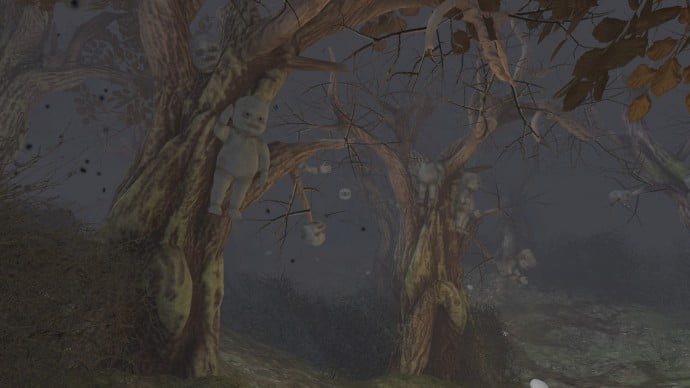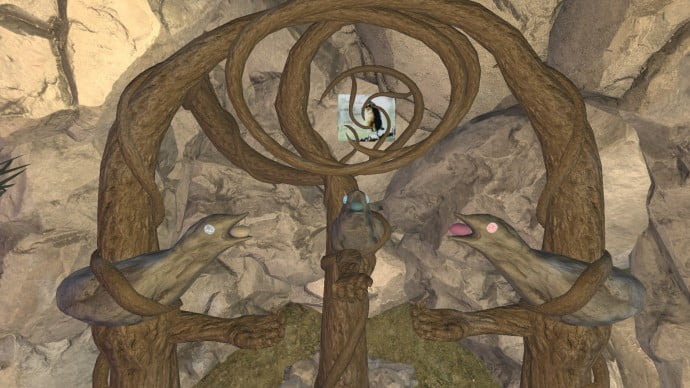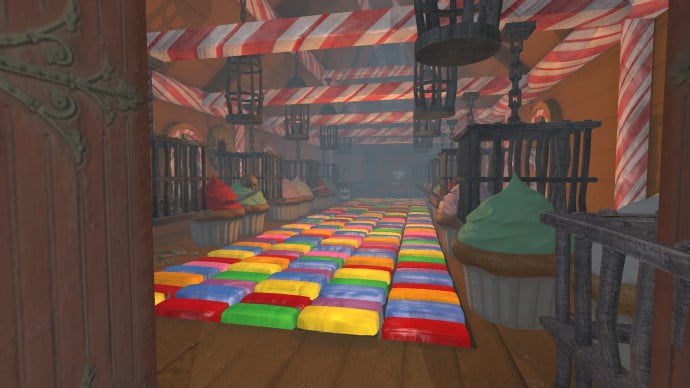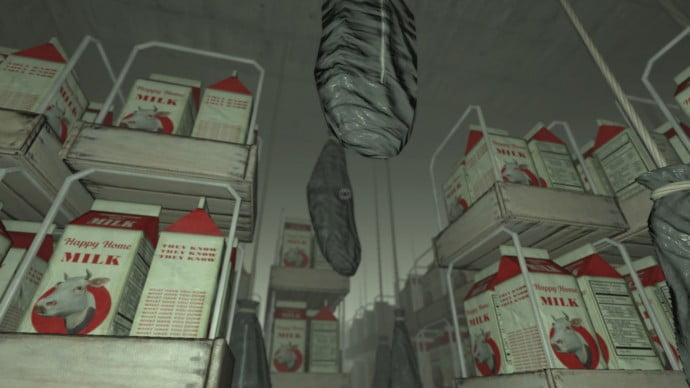Developer: Flying Mollusk
Publisher: Flying Mollusk
Preview Platform: PC (Steam)
Preview Copy Provided By: Flying Mollusk
Early-Access Release Date: March 31, 2015
One sure sign of a truly great game is how the players feel when they finally walk away from it. Did their virtual adventure have any lasting effect, and if so, does it change the way they look at the world around them? Nevermind, an indie horror game by Flying Mollusk, blends together maddeningly deep storytelling, horrifyingly beautiful visuals, and innovative technology to create a truly potent psychological experience. This Early-Access game, thus far, isn’t so much played as it is experienced, and you’re sure to step away feeling broken and vulnerable.
The Doctor Will See You Now
Nevermind puts players into the role of a profession neuroprober, an individual responsible for diving deep into the subconscious thoughts of patients to sort out whatever traumatic mess they encounter. With case report in hand, you transport yourself inside a patient’s thoughts and explore their mental landscape. Once inside their psyche, it’s your job to search for clues, or thought pictures, to sort out what happened in their past that’s affecting them now. Only when you solve all the puzzles and arrange their latent thoughts in a cohesive manner will they be set free from their oppressive subconscious. However, in order to help them, you must also battle your own fear and remain calm in the face of danger.

The Definition of Insanity
At first glance, it may seem like this indie title lacks any type of action. Your only available movements include walking, examining objects, or opening doors, but the lack of physical things to do actually increases the amount of tension that the game ultimately delivers. You can’t outrun whatever horrifying apparition the patient’s subconscious throws at you, so there’s an added element of helplessness that takes some getting used to.
In order to complete each patient case, players must collect ten though pictures hidden within the each mental landscape. While some of these horrifying images can be found simply lying around, others require you to solve puzzles or navigate mazes before you can get your hands on them. While none of these objectives are over-the-top difficult, the distracting surroundings and invasive stimulus of the world around you inherently amps up the challenge. Once you’ve collected all ten pictures, it’s your job to pick the five that actually happened and arrange them in a sensible order. Once you’ve discovered the actual chain of events that led to the trauma, the patient reaches an epiphany and can then openly face their fears.

Dreamscapes Gone Awry
While the puzzle objectives and detective work make up most of the actual gameplay, the real beauty, or horror, comes from each mind’s visual surroundings. The worlds you’ll walk through vary from mind to mind, but all are equally terrifying in their own way. Spiraling hallways, tunnels made from gore and car wrecks, and a cathedral-sized freezer filled to the brim with shuddering body bags are but a few examples of the twisted worlds the developers of Flying Mollusk have cooked up. Each environment lends players clues regarding the patient’s history, and while at times it may be hard to look, it’s nearly impossible to get the full story without examining each and every detail.
What’s really striking about the sights and sounds of Nevermind is the latent meaning behind each set piece. While there are plenty of jump scares and blood splatters, the nuanced horror from minor details, like a gun license for “daddy” or a carton of milk with accusatory slurs all over it, truly do the heavy lifting in the horror department. You don’t have to be a psychology major to realize that these nightmares very well could have been pulled directly from real people, and it’s extremely unnerving to walk through the tortured minds of these traumatized souls.

We Have Nothing To Fear But Fear Itself
One of the game’s major selling points, beyond the masterfully crafted environments and oppressively realistic stories, is the optional implementation of peripheral biofeedback gear. With the help of certain eye-trackers and heart-rate monitors, players can experience the effects of fear on an entirely different level. While I was not able to get my hands on any of these gadgets, the game reportedly amps up the difficulty and “fear factor” if it senses any physiological reaction to the already horrifying goings-on.
Having personally studied the concept of biofeedback and reflexive bodily actions, I’m a bit hesitant when the game claims it measures your fear. Heart-rate, eye movement, and galvanic skin response all change from a baseline with almost any emotion, and the only thing the game measures is immediate change. I could be thinking about a pool full of chocolate and money, but the game would interpret my bodily response as fear, thus amping up the game’s difficulty and thoroughly screwing me over. In such a case, I’m more inclined to believe the biofeedback peripherals are a bit gimmicky, and I had an excellent time without them.

Eros and Thanatos: A Freudian Legacy
Though the game is still in its Early-Access phase, Nevermind looks and feels like a beautifully polished product. The stunning graphics, appropriately twisted music and sound effects, and the haunting stories behind each patient case all come together to form a terrifying gestalt of life and death (though mostly death). The puzzles are a bit on the simple side and the touted biofeedback components are a bit cheesy, but the game itself has shaped up to deliver a lasting experience. You’ll step away from the Wonderland-esque worlds musing over your own sanity, and you may even start to wonder what your own subconscious looks like.
You can check out my first thirty minutes of play above and a collection of screenshots below!








